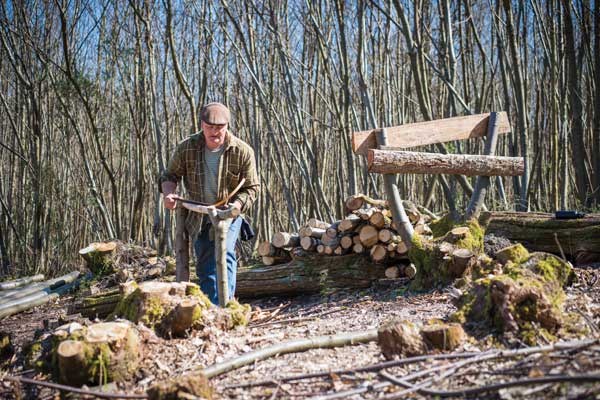
Ben Law is a woodsman in all senses of the word. Based out of the United Kingdom, his home and business is Prickly Nut Wood in West Sussex, where he uses traditional skills to build projects, teach classes and practice forestry management.
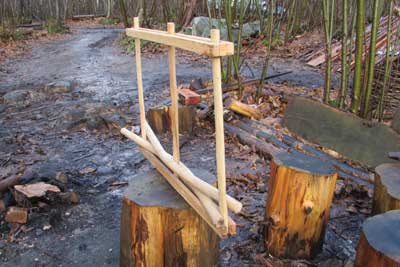
Ben left school at age 15 and worked on farms and small landholdings. “I had always known I wanted to work on the land, and the woods were a natural progression,” he said. His original involvement came via environmental concerns. Having visited the Amazon River and seen rainforest destruction firsthand at the end of the 1980s, Ben said he “concluded that good forest management and producing locally sustainably managed timber was the best way to reduce pressure on our need for tropical hardwoods.” When he returned to West Sussex 25 years ago, “this led me to becoming a woodsman.”
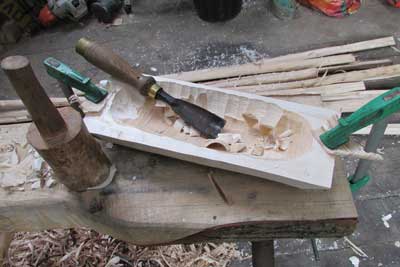
Billing himself as an “eco-builder” who teaches his students and readers of his books how to turn legally sourced woods into tools and furniture, Ben notes that the material he works with is a different experience from working with prepared lumber. Important elements to consider, he said, are choosing the right materials, working them “green” with hand tools, considering how the wood will shrink and the type of environment the finished piece will inhabit. “Working green wood with hand tools is a sensual, pleasurable experience,” he said, noting that tools needed are often limited to a sharp draw knife or side axe, with little effort put forth. Also, Ben said, “One of the real delights of working with green wood is the lack of sawdust and need for dust masks!”
In particular, one of Ben’s favorite species of wood to work with is sweet chestnut. “It grows fast and reasonably straight,” he said. “It is very durable (full of tannic acid) and has a high proportion of heartwood to sapwood at a young age. It cleaves beautifully and therefore offers itself to a wide range of woodland crafts and, of course, it produces a delicious, edible nut.”

In addition to the classes he teaches, Ben has written several books, including his latest, Woodland Craft (GMC Publications; distributed by Taunton Press in the U.S.; ISBN 9781861089366), which covers woodland craft materials, woodland management, and tools and devices for woodland crafts, as well as including instructions for a variety of projects ranging from farm and garden implements to chairs, a carved spoon, and construction materials like shingles and shakes. He’s also included instructions on building a yurt.
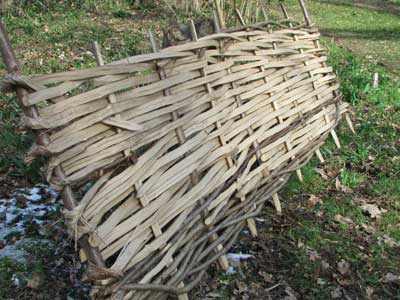
One of the book’s more popular projects, Ben feels, is the lightweight temporary fence, of a type often used for controlling sheep’s access to grazing land. Called a hurdle in England, Ben says this project is “always popular as they can be created from freshly cut hazel in the woods with just a bill hook. Hazel’s ability to weave back on itself through twisting the fibers is always an exciting experience.”
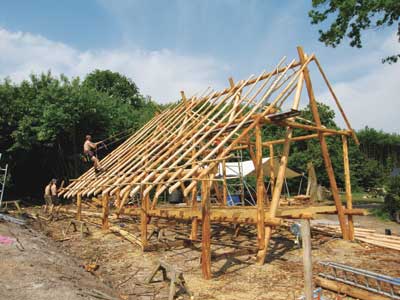
Personally, he really enjoys round wood timber framing. “The ability to produce a home/shelter from coppice wood is deeply satisfying, and the global interest and spread of roundwood timber framing make it a very exciting area in which to be working,” Ben said. He covers timber framing in the book, with project plans for making a roundwood timber-framed caravan.
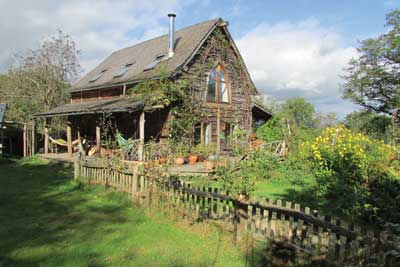
Ben’s also currently involved with a project making chestnut shakes for the Weald and Downland Open Air Museum in West Sussex, England. “I need to make 56,900 shakes, and it should be the largest timber roof in the UK once completed!”
Overall, Ben said, “The history and tradition of woodland craft has always been strong in England. It has suffered a dip over the past 50 years but is now re-emerging. Specialist tool makers are now re-making traditional tools for a new generation of woodland craft makers.
Ben is a strong proponent of sustainability. Historically, woodland crafts are intertwined with “coppice” (an area of woodland where the trees or shrubs are pruned and cultivated for human use) management in the UK, he said. “The demand for products creates the woodland coppice systems. Such systems are our most sustainable form of woodland management, where the cyclical cutting of coppice increases biodiversity and supplies us with craft material. If we stop cutting the coppice, biodiversity decreases.”







